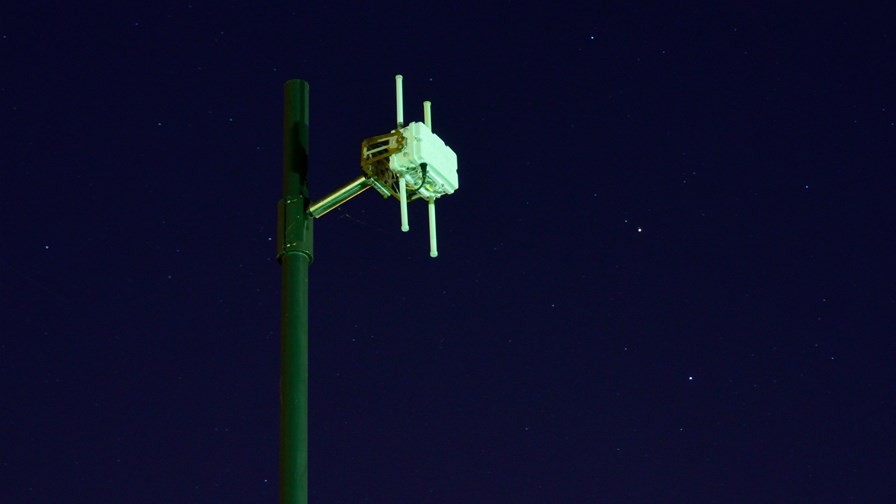
via Flickr © kewl (CC BY 2.0)
- LAA/LTE-U needs to work with WiFi - all agree
- The LWA approach may offer a more tactical alternative
- Advantages of LWA
As Guy Daniels reported yesterday the 3GPP held a workshop in Beijing this week to discuss the status of Licensed-Assisted Access (LAA) - the standard proposed to enable LTE to operate in the unlicensed spectrum where WiFi plays.
LAA is the European version of the US LTE-U and differs mostly in the way it handles contention. (see - Cellular and WiFi come out to play. Is it BFF for LAA?)
The 3GPP wants to be able to show that the two can play fairly in the same spectrum domain and to come up with tests that both sides can accept will require working in a multi-partisan way to agree the ground rules.
The whole LTE-U/LAA concept has understandably garnered a lot of contention in its own right because of the way it might appear to the suspiciously-minded to be an attempt by licensed telcos to muscle in on WiFi territory and shoulder WiFi operators out.
But one of the reasons many people on both sides of the WiFi/LAA fence seem to be rather untroubled by its probable arrival is that they just don’t think it will work, in the sense that it won’t be adopted by licensed telcos to any great extent.
Why?
Because many believe it’s most likely possible, in the end, to aggregate LTE and WiFi as both technologies currently stand and thus get most of the advantages being sought without going to the trouble and expense of building out a new network. An expense, by the way, that most operators would like to avoid like the plague. Incremental capacity improvements are thought to be the way forward in the ‘tactical teens’.
And what are those advantages? Essentially, service aggregation across the two domains will allow ‘WiFi first’ operators, like Republic in the US and (from what we can tell) Google with its Project Fi, to have its users benefit from the broad coverage afforded by long range cellular while handling the bulk of the heavy-lifting data downloading via WiFi (public WiFi as well as residential). That ‘best of both worlds’ effect is already being tapped in the other direction by licensed operators who, since the dawn of the iPhone, have been explicitly or implicitly relying on their users toggling over to WiFi for the bulk of their data needs and thus taking the strain off the mobile network.
Developing a relatively ‘seamless’ way of having the two work together by ‘aggregating’ their capabilities is therefore the goal for both WiFi first and ‘cell first’ operators.
The structured way to do this for a mobile telco is to build telco technology and standards into unlicensed territory via LTE-U/LAA. But a cheaper, more tactical alternative is to have effective aggregation of the technologies enabled without building a new network technology - using a looser coupling called LWA (LTE/WiFi Aggregation) and using the intelligence mostly gathered at the edge of the network (in handsets and servers) to intelligently and dynamically aggregate streams.
For WiFi advocates LWA should be clear winner (at least in the medium term). According to consultant and unashamed WiFi advocate, Claus Hetting, there are so many advantages to the LWA approach that it’s difficult to see why LTE-U could be a serious immediate contender.
Here, in no particular order and without Claus’s precision, are are the main ones.
Cost. This is huge. The reason WiFi has done so well to now is essentially because of its scale and the fact that the silicon needed to drive it has become enormously cost effective. Claus thinks WiFi base stations are and will remain an order of magnitude more cost effective than any alternative LTE-U technology. Telco technology always costs much, much more (which is why telco equipment vendors are so keen on have telco technologies dominate the unlicensed bands too).
Pervasiveness: WiFi is already everywhere, especially in the home. And also in the office. So as it’s already waiting to be aggregated, why would you try to replace it with something which did more or less the same thing with only dubious efficiency advantages?
Approvals: there are already differences in national requirements for running LTE-U - and implementation is not even under way. A global LTE-U market would be fragmented.
Ongoing interworking: Getting telco standards to work in an intimate and still effective way with IEEE standards has always proved difficult if not impossible. It’s been tried, it’s often failed.
Part of the last problem is around standards churn. Tight integration with the network puts a WiFi replacement technology on a long life-cycle whereas WiFi will presumably remain dynamic and ever-improving.
So why the enthusiasm? Perhaps the fostering of LTE-U and LAA is part of a long game, hatched to help telcos eventually win back data access pricing control by dominating the entire spectrum? It’s a motive oft stated, but usually presented in less stark terms.
Email Newsletters
Sign up to receive TelecomTV's top news and videos, plus exclusive subscriber-only content direct to your inbox.




